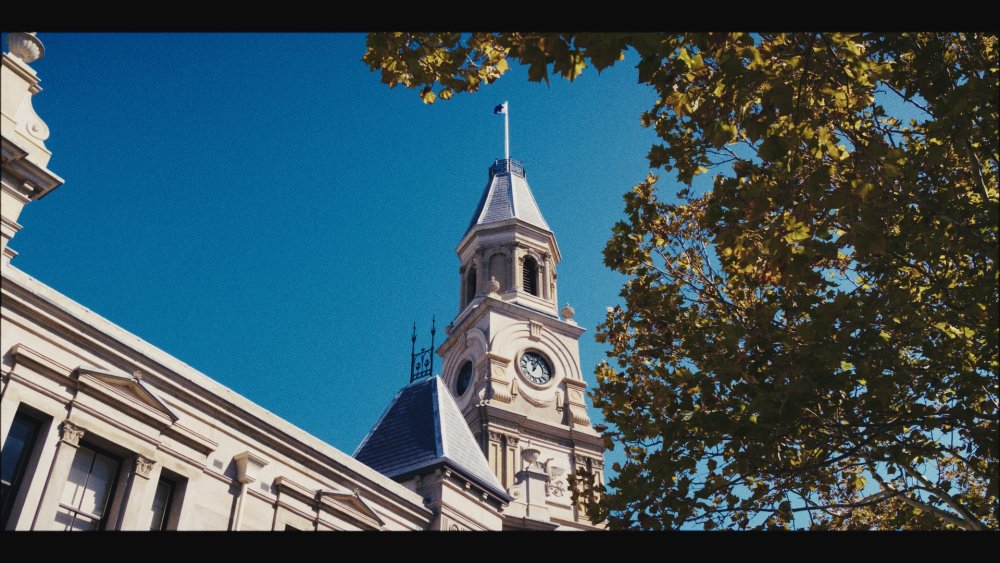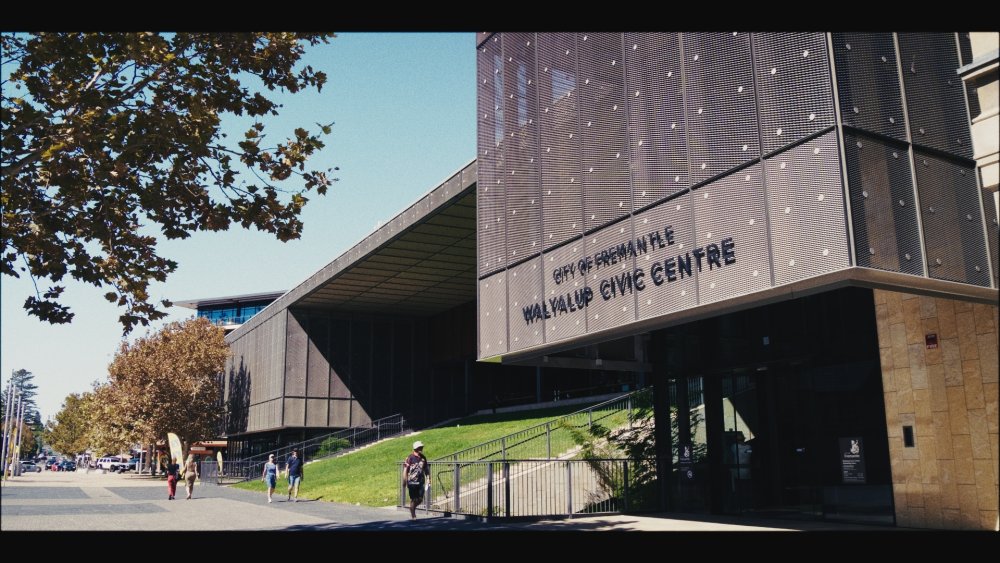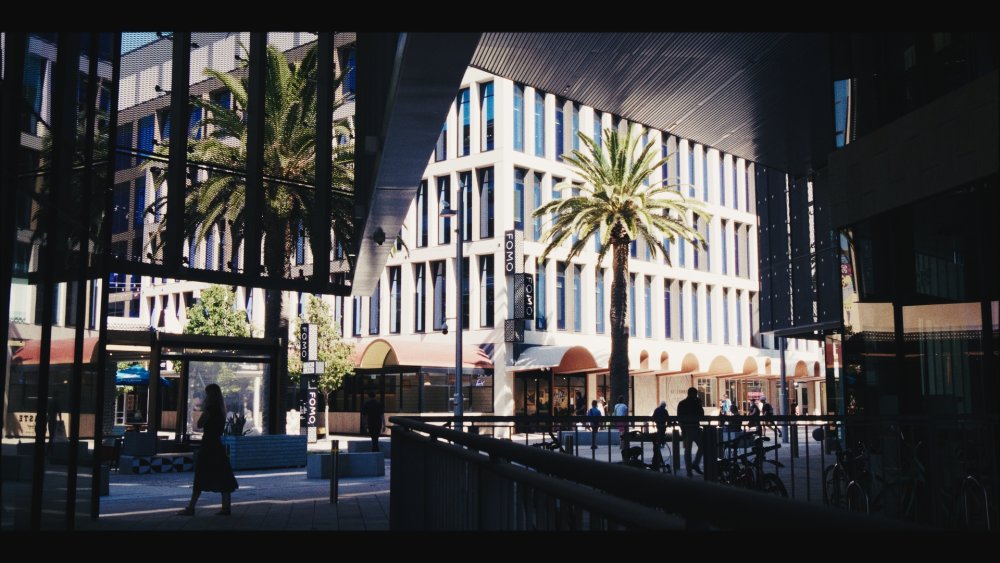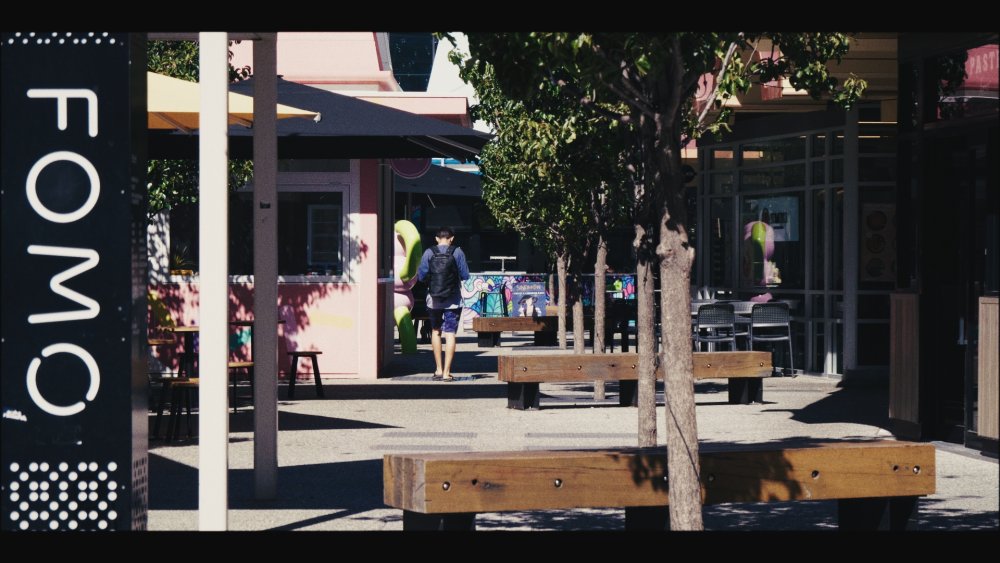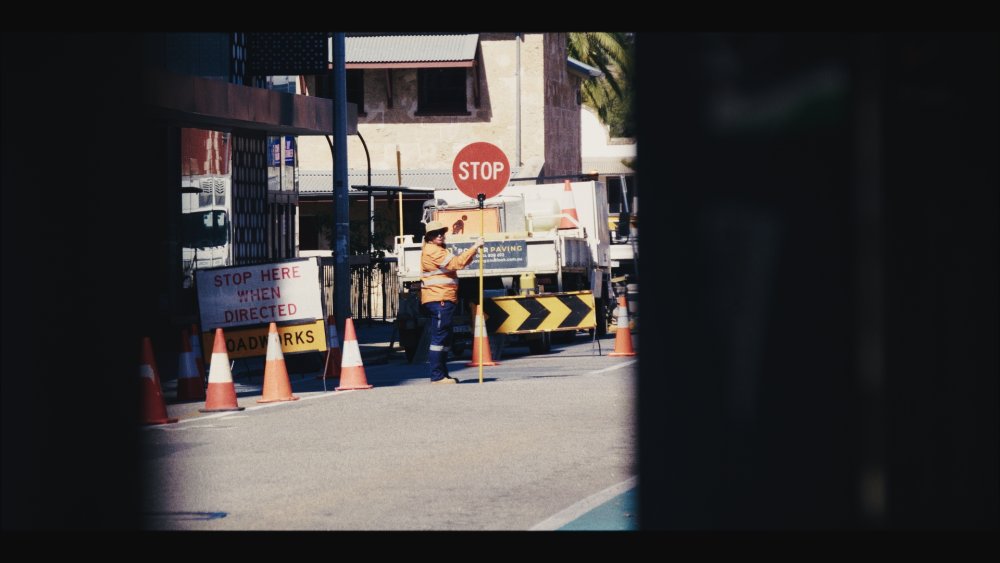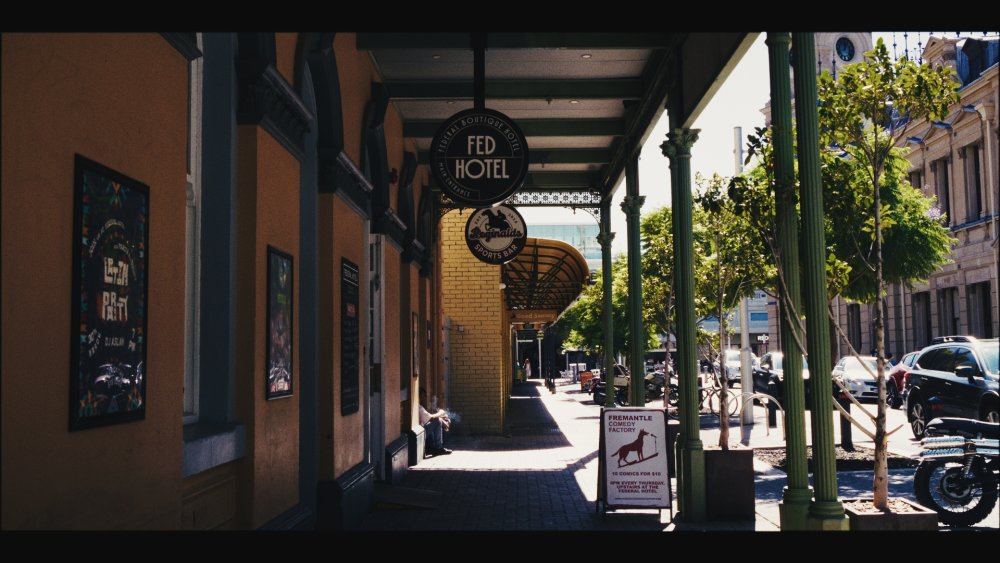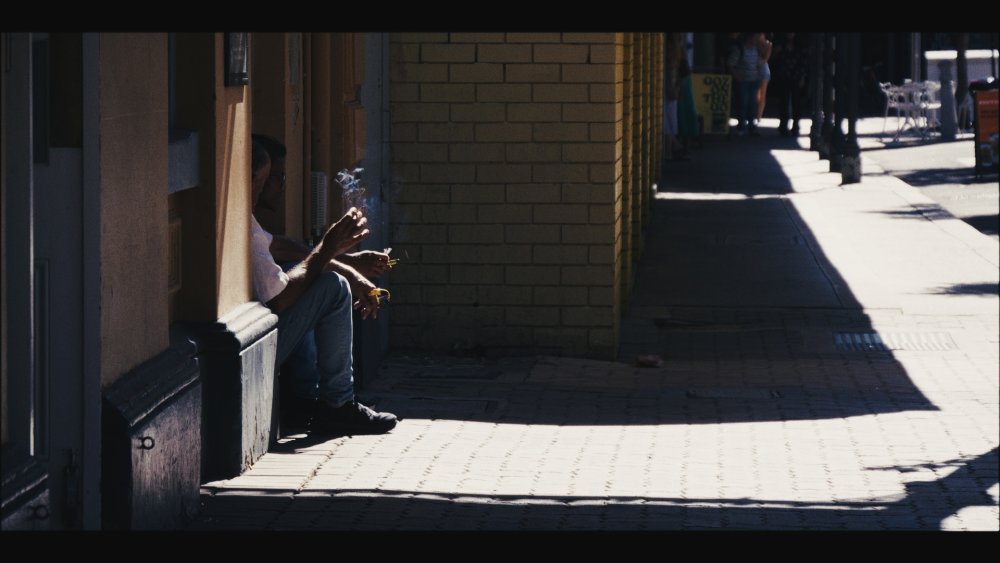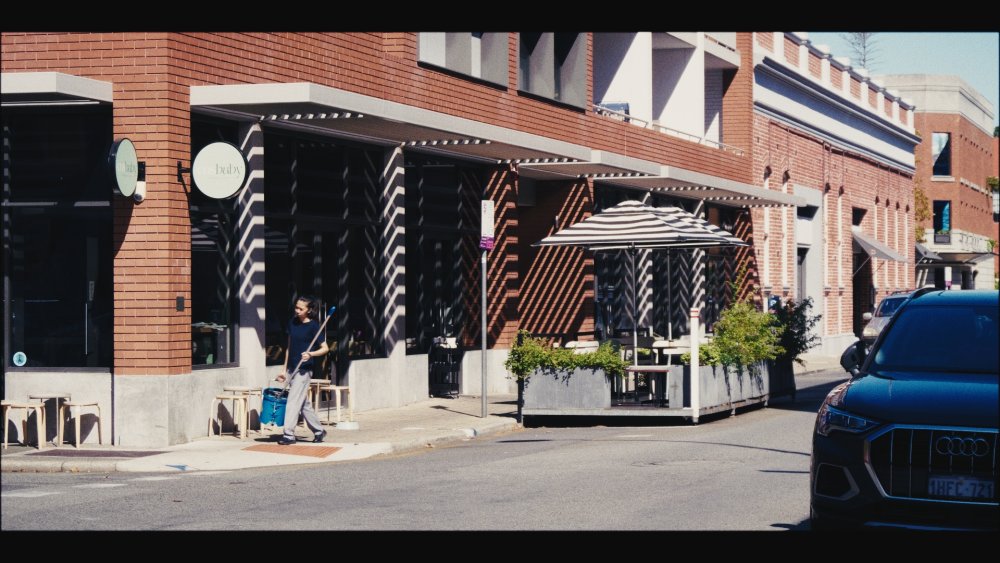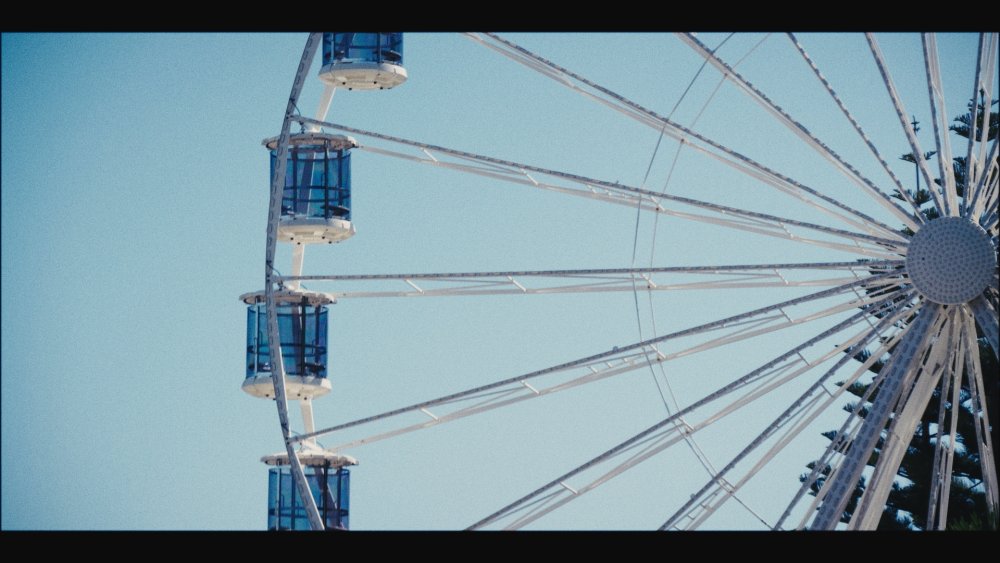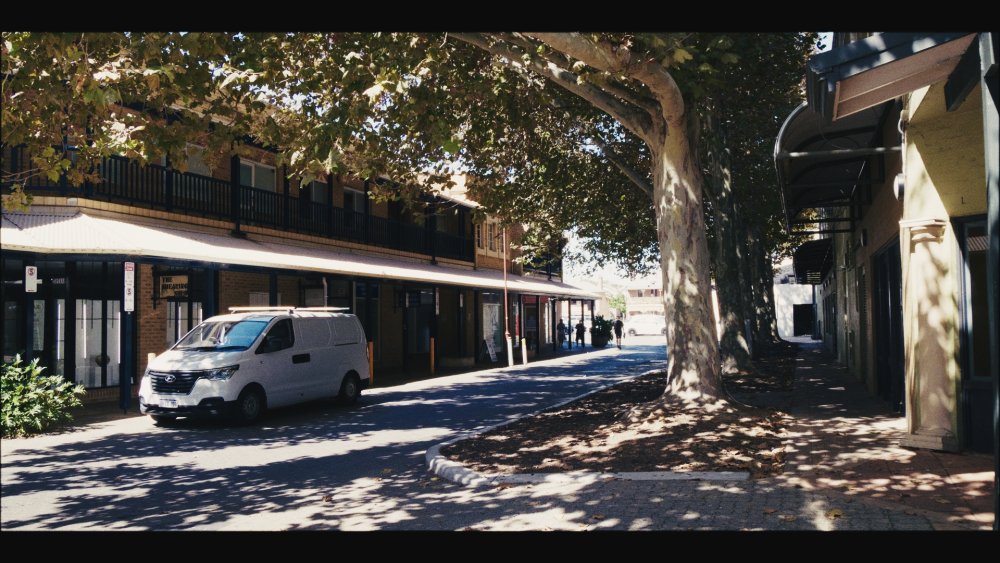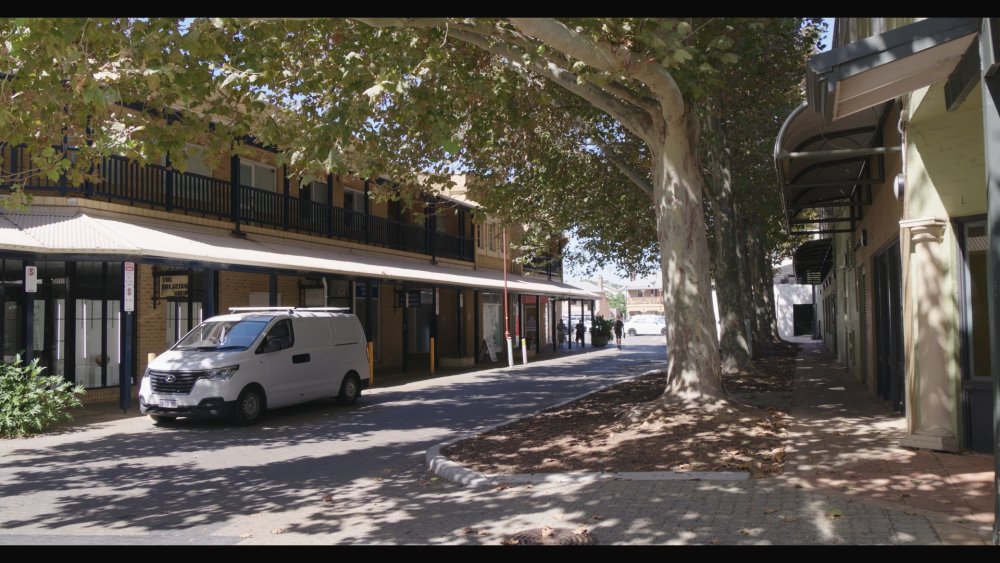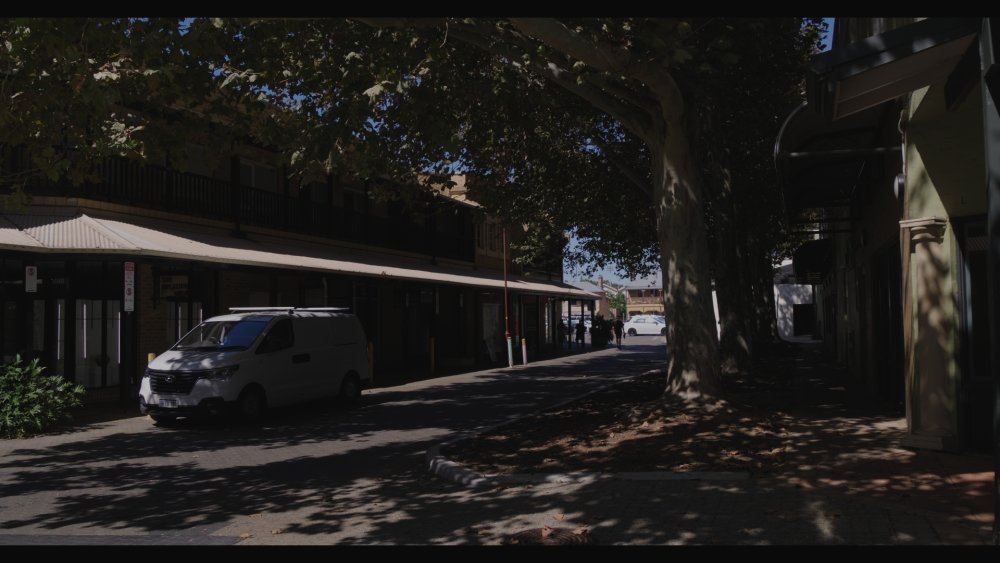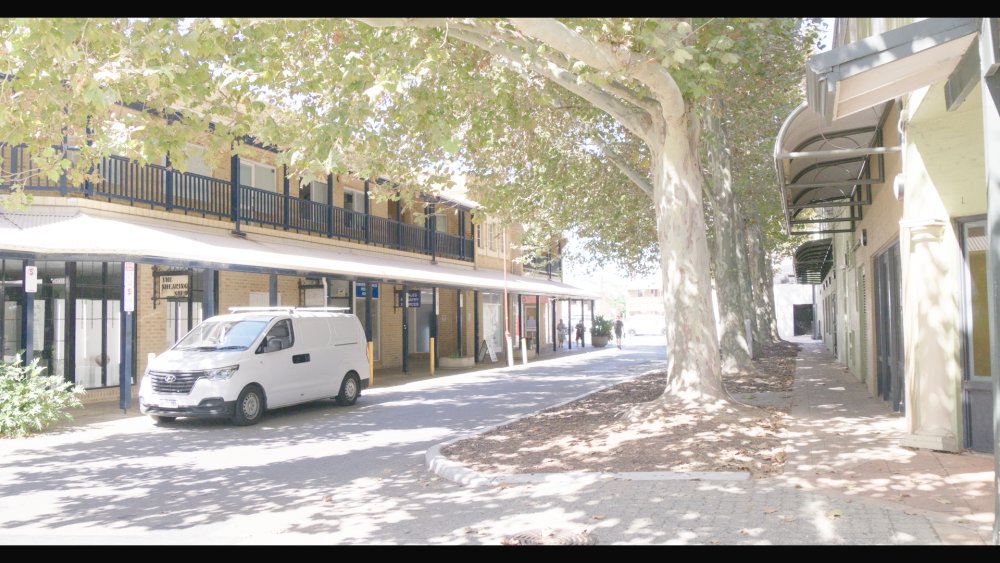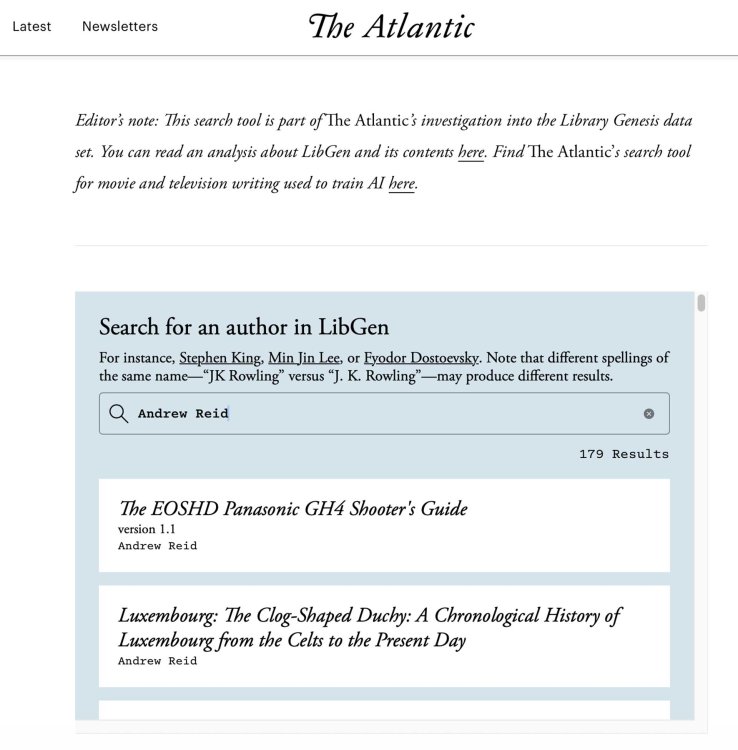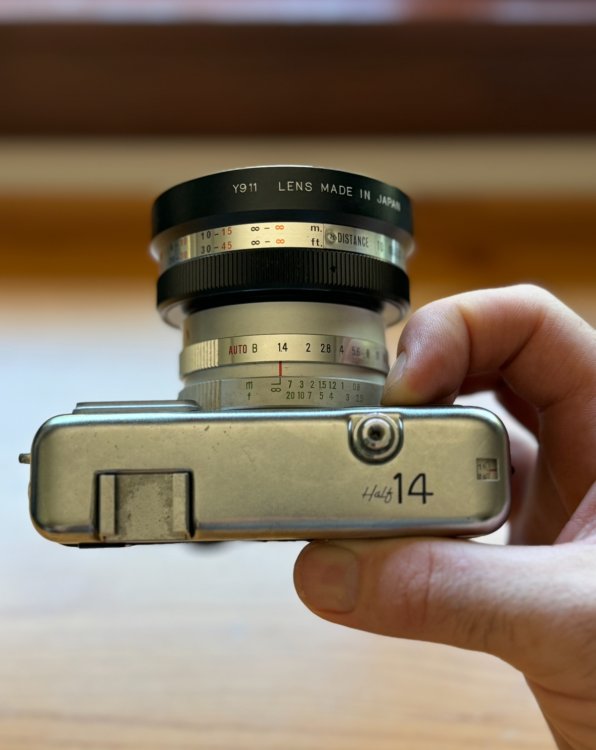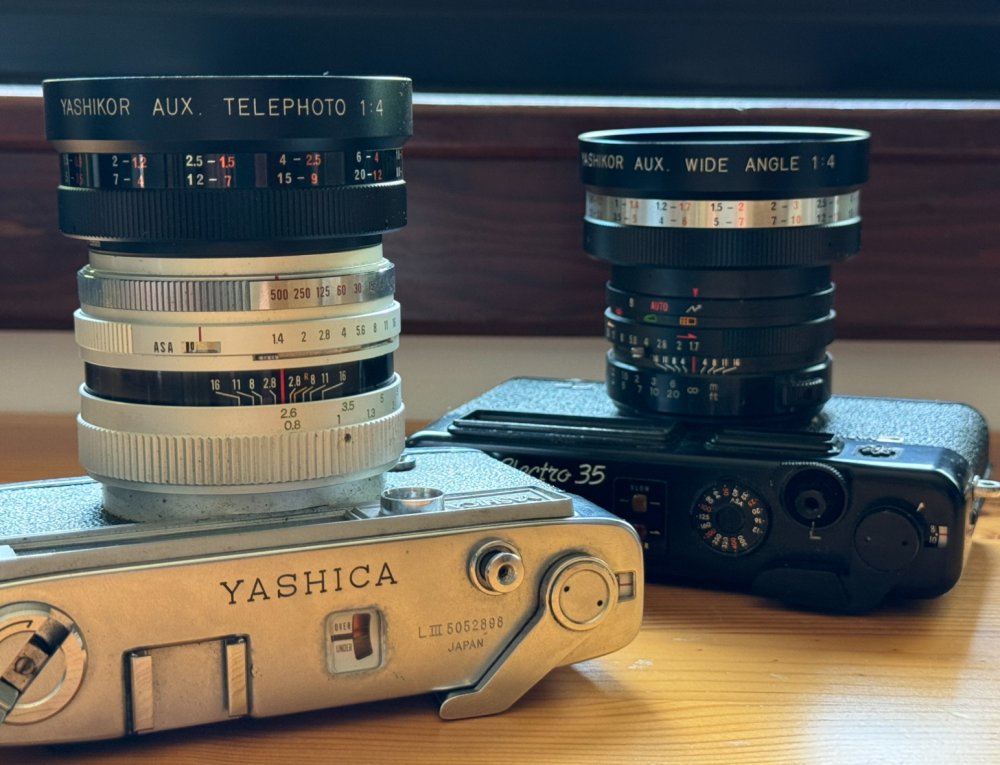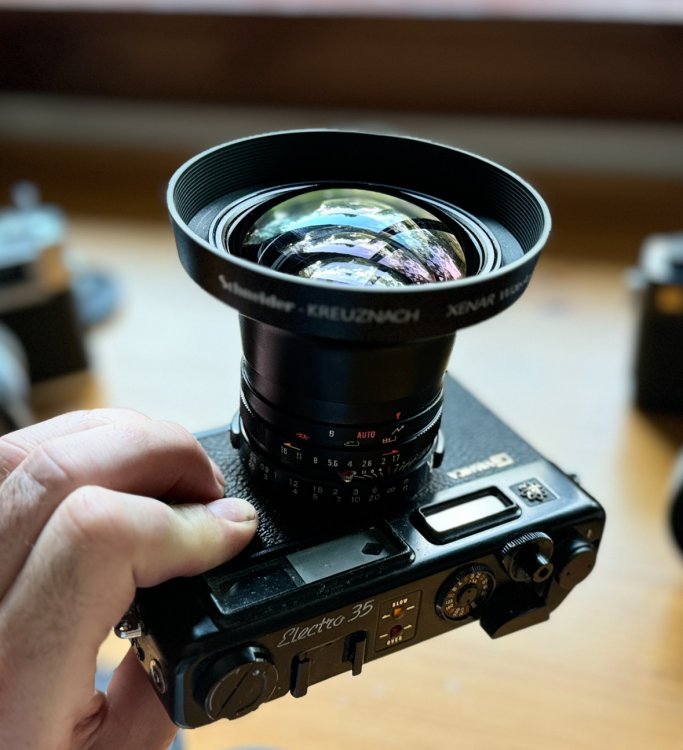Leaderboard
Popular Content
Showing content with the highest reputation on 03/28/2025 in all areas
-
I have a new setup and pipeline and I'm really happy with it. GH7 shooting V-Log in C4K Prores 422 internally, at around 500Mbps 14-140mm F3.5-5.6 lens for daytime, 12-35mm F2.8 for night-time K&F True Colour 1-5 stop vND Pipeline in Resolve: CST to DWG as working colour space Plugin for basic shot adjustments Film Look Creator for overall look (and for taking the digititis out of the image) ARRI709 LUT to get to 709 output I went on a walk on Monday to test the full setup, and it was a crazy hot day (37C/99F) and direct midday sun, so seriously challenging conditions. Here are a few grabs (be sure to click-through rather than viewing the preview files embedded in the post). My notes and impressions - while shooting: Setup was GH7, 14-140mm lens, vND, and a wrist-strap and that's it I used the integrated screen, showing histogram, zebras, and focus-peaking to monitor I used back-button focus to AF before hitting record, so no AF-C going on while shooting (and randomly changing its mind about what to focus on) All shots were 14-140mm at F5.6 for constant exposure The K&F 1-5 stop vND had enough range, when combined with the DR of the GH7, so I never needed to change settings, despite going in and out of shadow (and even inside, which isn't included in the above images) The vND had a much more consistent sky and colour render than my old (crappy) vND, so I'm really happy with it I did ETTR and bring images down in post, but my tests indicated that V-LOG is very linear so there are a good few stops of latitude there The "tripod mode" of IBIS, which locks the frame completely, was very effective (despite me being hot and not having eaten for hours) and I could hand-hold past 70mm without it needing to drift, and even at 140mm (280mm FF equivalent) the shots will be fine with a bit of stabilisation in post (C4K on 1080p timeline) I shot about 18mins of footage in about 1.5 hours, camera was on most of the time with screen at full brightness, and didn't get any notifications about the battery, and didn't look to see how much was left since I have a spare My notes and impressions - in post: I chose a Film Look Creator preset and then just messed with it for maybe 10 mins, while scrolling back and forth through the footage, and I deliberately pushed the contrast to create a really strong sense of the contrast between the beating sun and the deep shadows Shots had exposure adjusted (obviously, due to ETTR) and some had contrast lowered and a few had slight WB tweaks, but that's it I never felt like I was fighting with the footage, and it didn't feel like work when creating the look.. I've shot with a lot of cheap cameras with tiny sensors and you always feel like you're trying to make gold out of lead, but playing in the FLC was more like choosing between a large range of high-quality options I used another copy of the FLC to adjust exposure etc per shot, with it set to not impart and 'look'. The advantage of that is that in Resolve there is a mode (Shift-F) that maximises the preview image and gets rid of the GUI except for the vertical toolbar on the right-hand-side where the DCTL and OFX plugins are, so it's a way of getting almost a full-screen view but keeping the controls visible.. very useful if you don't have a control surface or a second monitor handy. I'll talk more about my thought process and how I got to this setup in a later post, and also go into some of the technical stuff (DR, high-ISO, etc) but more importantly than that, I finally feel like the tech has come of age. What I mean by that is that I now have a setup where: I can shoot with a conveniently sized setup that doesn't need a rig and is ergonomic to use It has the right usability features, such as histograms, zebras, focus-peaking etc internally The monitor is bright enough The GH7 plus lenses (14-140mm F3.5-5.6 and 12-35mm F2.8) are long enough and fast enough to shoot what I see, without being too large, heavy, or prohibitively expensive It has enough spec that it can deal with almost all the situations that I actually shoot in, with enough DR for the sun, enough ISO for night-time, and fans so it doesn't overheat before I do, etc It shoots internally using a colour space and codec that don't look cheap/amateurish and make me think about upgrading It doesn't fight with me in the colour grade Resolve and the Film Look Creator are able to easily give me the flexibility in post to match images and correct any weaknesses from shooting (e.g. if there's a bit of movement when shooting hand-held at 140mm) Resolve and the Film Look Creator are able to remove the 'digital/video' look and instead give me a range of options that don't look artificial and most importantly, contribute a feeling to the footage without distracting from the content of the images (this is, after all, the entire purpose of what we're doing here.....) For the first time it feels like I'm getting the results I want because of the equipment I have, rather than in spite of it.7 points
-
HA! I didn't notice that until you pointed it out, as I hadn't hit play on that shot yet. I guess nothing is immune to moire, although this was worse than I would have thought. The GH7 has no crop in its full resolution modes, and none in the 1080p modes, but the 4K modes do have slight crops - with the C4K having slightly less crop which is why I chose it, so I wonder why that is and what tom-foolery might be going on with that. The bitrates for the native resolutions are pretty brutal without Prores LT, so I'll likely stick to the C4K mode unless it starts being an issue. Thanks! I didn't get the LogC upgrade. I haven't seen any tests that were done properly so am assuming that it's not worth the cost unless proven otherwise. I also figure that even if there is some magic in there, I'm taking a hammer to the image with the FLC anyway, so it's not like I'm precious about it. The only thing I am precious about is getting images that have the right aesthetic to support the subject matter and get out of the way rather than being distracting. When I saw Goodfellas and a bunch of film trailers projected on 35mm film, the two most stunning things about the images were: 1) how fundamentally flawed they were from a technical perspective 2) how quickly and completely those incredible flaws evaporated and you saw effortlessly through and into the scene I'm still at the beginning of my FLC journey, but I'm convinced this pipeline is capable of removing the digital distractions from the image that bug me so much.2 points
-

New travel film-making setup and pipeline - I feel like the tech has finally come of age
newfoundmass and one other reacted to kye for a topic
Part 2... how did I get here? I've written about this previously, but the summary is that I went through a sequence of trial and error, continually bumping up against the limits of the hardware, the software, my skill, and mindset. Setup: GH5, fast manual-focus primes I shot a bunch with the GH5 and a set of very fast MF primes. I chose this setup as it had 10-bit LOG, IBIS, and the fast primes gave good low-light and some background blur. I knowingly sacrificed AF, essentially swapping a fast / accurate / robotic AF for a slow / human / aesthetically-appropriate focusing mechanism. The MF worked, but not always (especially for my kids, who wait for no-one), and took time and effort to operate the camera away from the things that literally every other crew member does on set. The 10-bit LOG worked, but wasn't a properly supported LOG profile so didn't colour grade flawlessly in post. The primes provided the low-light and shallow-DoF but the shots I missed because I couldn't change lenses fast enough were more valuable in the edit than having shallow-DoF. The DR was lacking. Setup: GX85 with 12-35/2.8 I owned the GX85 and 12-35mm zoom, so I did some testing. I loved the speed of AF-S, and the deeper DoF meant that the number of shots unusable due to missed focus dropped to almost zero. I tested it with low-light and for well-lit night-time areas, like outdoor shopping malls, it was sufficient. The Dual IS (IBIS + lens OIS) was absolutely spectacular and a welcome addition, and having a zoom made me realise why doco and ENG shooters have them as standard issue. The DR and 709 profile was a real limitation though, and I really felt it in the grade. It was around this time I figured out proper colour management, and the Film Look Creator was released. These made a huge boost to grading the GX85, despite its 709 profile. The mindset shift The fundamental pivot was in mindset. As social media became faster and more showy, I noticed the gulf between it and 'real' film-making more and more. I went minimalist, thinking more and more about the days before digital where the process was to shoot as best you could, cut it, do sound-design, and that was it. The focus was on what was in-front of the camera, how the cuts made you feel, and sound design that supported that vision. Even those shooting docs on 16mm film could make magic. Without throwing away the baby with the bathwater, I decided to re-focus. To shoot what I could shoot, to learn to cut with feeling, and to simulate a film-like colour grading process where the look was applied and only very basic adjustments were made. Setup: OG BMMCC with 12-35/2.8 I owned these already, and on my last trip to South Korea I took these as well as the GX85. My shooting moved from shooting people I knew to shooting more general scenes, giving me more time and taking the time pressure off. The setup was large (comparatively!) and very slow to work with, but it validated my mindset shift. The images were organic and rich, but in a way that drew you into their contents, rather than towards the medium. The DR was finally sufficient, and the colours were delightful. But the monitor wasn't bright enough, the lack of IBIS meant that the OIS stabilised tilt and pan but not roll, so the images all needed to be stabilised in post, but had roll motion blur due to the 180 shutter. The low-light wasn't ideal either, even with fast lenses. The moire from the 1080p sensor was real and ruined shots. I also got a lot more comfortable shooting in public with a more visible camera setup. New Setup: GH7 with 14-140 and 12-35..... So what I wanted was the best of all worlds. Dynamic range. I knew the OG BMMCC and OG BMPCC were the same/similar sensor, and I knew the GH7 had more. What I didn't expect was how much more that would be in real life. Here's a high DR scene from Monday. Here it is without the FLC, which I set to add contrast. Now with the shot raised by 3 stops. Notice the detail in the railings and under the eves on the right. Now with the shot lowered by 3 stops. Notice that the roof, and even the body of the car are still not clipped, with the only clipping being the sun reflecting off the car window. In grading, there is more DR than you can fit in the DR of the final shot - assuming you haven't developed Stockholm Syndrome for your LOG footage that is. Low light. I had previously established that the GX85 and 12-35mm F2.8 were good enough for well-lit night locations. I also knew that the BMMCC at ISO800 and the 12-35mm F2.8 set to a 360 shutter was good enough for semi-well-lit night locations. I also knew that the BMMCC with my 50mm F1.2 lens was passable at the darkest scenes I shot in Korea - which were from the hotel window at night. I've compared the GH7 vs the GX85 and BMMCC and the noise profiles are all very different, but I concluded that the GH7 had probably 2-4 stops of advantage over those. This means that I might be able to shoot well-lit night locations with the 14-140mm lens, and might be able to shoot from the hotel window at night with the 12-35mm lens. I'm still contemplating if I should take my F1.2-1.4 primes on my up-coming trip, but if I don't I'll still be able to shoot 99% of what I want to with the zooms. Camera size. Perhaps the only drawback when compared to my previous setups. I'll be taking the GX85 and 14mm F2.5 pancake lens as the pocketable tiny camera. This combo is no slouch by itself, so although it lacks some of the specs from more serious cameras, it is easily in the capable category, especially when helped by Resolve+FLC and from a shoot-cut-sound-publish mindset. Absolute speed. When it comes to absolute speed, nothing beats a smartphone, which is always in your pocket, can be pulled out and rolling in seconds. This is also a serious tool when combined with Resolve+FLC and a shoot-cut-sound-publish mindset.2 points -

New travel film-making setup and pipeline - I feel like the tech has finally come of age
Emanuel and one other reacted to John Matthews for a topic
That's a good feeling. Nice to see you posting again as I always like to hear what you have to say. The shots look really good! So, did you get the Arri LUT add-on?2 points -
Not to mention that Museum Of Modern Moiré building.2 points
-
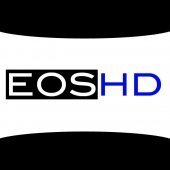
Canon EOS R50 V
mercer and one other reacted to Andrew Reid for a topic
The EOS R50 V is a loss leader out to encourage lens sales with a huge army of social media influencers and Youtubers. On the face of it, it's definitely a step forward from Canon in the value for money stakes. Sure, they will want you to buy loads of expensive glass for it. Thankfully Sigma is doing some nifty APS-C lenses so we don't have to. I do like the built in LUTs, C-LOG3, AF should be decent although maybe perfect, but it does lack an EVF and IBIS.2 points -
Idk, cinema cameras cost a lot for a reason. As far as mirrorless cameras have come, they're still not proper cinema cameras. In a lot of instances, the benefits of mirrorless may outweigh the benefits of cinema cameras, but at this price point, it's hard to argue against the Komodo if you intend to shoot certain types of projects. If not, then it's a simple pass. I will say it makes it a bit harder to justify a few other cameras at a similar price point. But this price will go away once they run out of the bins of RF mounts they have in stock. The questions is, what will Nikon do next? Will they replace it with a similar camera at a similar price?1 point
-
What's interesting about the LogC license is that it was probably mapped for that specific sensor. The vLog could have just been tossed in. Maybe. Either way, cool camera and shots.1 point
-
It was missing a question mark as I was looking for confirmation if it was or wasn’t 😀 I don’t disagree but by the same token, the S5 has garnered the reputation as being a much nicer image than it’s successor the S5ii from people who own both bur I only have personal experience with the latter so I have no idea. Keeping the resolution of the camera in all names means It has a whiff of the file naming abyss you fall down with “FinalEditUltimateRevisionDeliveryVersion.mov” that quickly becomes “FinalEditUltimateRevisionDeliveryVersion_v2.mov”1 point
-

Meta pirated the EOSHD GH4 Shooter's Guide
92F reacted to Andrew Reid for a topic
Was catching up with my new favourite magazine The Atlantic today They have some neat AI articles https://www.theatlantic.com/technology/archive/2025/03/libgen-meta-openai/682093/ Like this one about the kind of scale of piracy the tech giants are doing in order to train some of their mainstream AI models. There's a link to a tool called LibGen, where you can put in an author name and see if his work has been harvested up by Meta and used to train their large language models. https://www.theatlantic.com/technology/archive/2025/03/search-libgen-data-set/682094/ Sure enough I put "Andrew Reid" into it and up comes the GH4 guide. So we can confidently say the Meta's Llama 3 knows all about shooting 4K with a certain 2014 Lumix camera. When do I get paid and how much?1 point -

RED Drop KOMODO Price To $2995.00
zlfan reacted to Andrew Reid for a topic
For once I'll give you all a reason not to get a new camera 🙂 The thing with the Komodo is you have to believe it's worth the hassle, in terms of cinema magic. Special sauce. And so on. The colour science is tip top, we all know that the codec is pretty special too. But cinema cameras are tanking in the lower-end of the market for a reason. They are clinging onto the sensor in a box concept without the convenience factor of a stills camera. They are still designed to be rigged up into something unwieldily, heavy and slow to operate. And in the past it was worth it for the image. But now that internal RAW video is commonplace on mirrorless cameras and you have a sensor as good as in the Z8 or EOS R3, the special sauce is right there along with the small body, small battery, power economy, EVF, IBIS and so on. Which makes cinema cameras completely obsolete. They now serve only non-creative functions like impressing clients or fitting existing workflow expectations. ARRI is still a bit special in terms of the cinema magic in the images, but you can't really say the same about the Komodo vs a $3k mirrorless camera. In fact I dare say the Sigma Fp-L has a more cinematic look in uncompressed 4K RAW mode.1 point -
1 point


